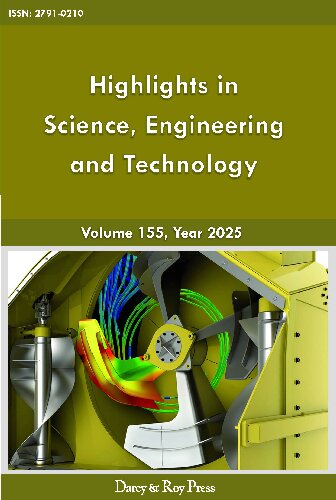Research Applications of 3D Printing in Biosensors
DOI:
https://doi.org/10.54097/9jw7eh72Keywords:
3D printing, biosensors, printing materials, biomaterials.Abstract
With the development of society, the concerns of the public have shifted to the aspects of physical health and environmental protection. This leads to a huge demand for biosensors. At the same time, 3D printing has been improving for several years. In this review, the Various categories of 3D printing and their accessibility on biosensors are discussed. There are 7 main types of 3D printing. When each type of technique is applied to biosensors, advantages and disadvantages will emerge. In the final, vat photopolymerization is found to be the most suitable way to apply mature biosensor solutions, which are for the commercial market. And material extrusion and material jetting are good ways to help experimenters build simple sensor prototypes in the early stages of research and development. By aligning 3D printing methodologies with biosensor design goals, this review contributes to accelerating innovation in healthcare, environmental monitoring, and point-of-care diagnostics, addressing pressing global challenges.
Downloads
References
[1] Remaggi, G., Zaccarelli, A., & Elviri, L. 3D printing technologies in biosensors production: Recent developments [J]. Chemosensors, 2022, 10 (2): 65.
[2] Karunakaran, C., Rajkumar, R., & Bhargava, K. Introduction to biosensors [J]. Biosensors and bioelectronics, 2015: 1-68.
[3] Malhotra, B. D., Singhal, R., Chaubey, A., Sharma, S. K., & Kumar, A. Recent trends in biosensors [J]. Current Applied Physics, 2005, 5 (2): 92-97.
[4] ASTM International. Standard Terminology for Additive Manufacturing Technologies: Designation F2792-12a [S]. ASTM-Standards, F2792; ASTM International: West Conshohocken, CA, USA, 2012.
[5] Wang, X., Jiang, M., Zhou, Z., Gou, J., & Hui, D. 3D printing of polymer matrix composites: A review and prospective [J]. Composites Part B: Engineering, 2017, 110: 442-458.
[6] Pina, S., Reis, R. L., & Oliveira, J. M. Ceramic biomaterials for tissue [J]. Fundamental Biomaterials: Ceramics, 2018: 95.
[7] Thompson, M. K., Moroni, G., Vaneker, T., Fadel, G., Campbell, R. I., Gibson, I., ... & Martina, F. Design for Additive Manufacturing: Trends, opportunities, considerations, and constraints [J]. CIRP Annals, 2016, 65 (2): 737-760.
[8] Sames, W. J., List, F. A., Pannala, S., Dehoff, R. R., & Babu, S. S. The metallurgy and processing science of metal additive manufacturing [J]. International Materials Reviews, 2016, 61 (5): 315-360.
[9] Gibson, I., Rosen, D., & Strucker, B. Directed energy deposition process [J]. Additive Manufacturing Technology, 2015: 245–268.
[10] Singh, R., Gupta, A., Tripathi, O., Srivastava, S., Singh, B., Awasthi, A., ... & Saxena, K. K. Powder bed fusion process in additive manufacturing: An overview [J]. Materials Today: Proceedings, 2020, 26: 3058-3070.
[11] Pilipović, A. Sheet lamination [J]. Polymers for 3D Printing, 2022: 127-136.
Downloads
Published
Issue
Section
License
Copyright (c) 2025 Highlights in Science, Engineering and Technology

This work is licensed under a Creative Commons Attribution-NonCommercial 4.0 International License.


















